
http://yield2me.com/-69453.htm
best hostgator coupon site
Guang An Men Hospital (GAM),China Academy of Chinese Medical Sciences (including the Second Institute of Clinical Medicine), was founded in 1955, affiliated to the China Academy of Chinese Medical Sciences, one of the hospitals directly under the State Administration of Traditional Chinese Medicine(TCM) in Beijing. Among the nation’s very best TCM hospitals, it conducts clinical practice, scientific research and teaching, together with specialties in many departments. It was rated as a National TCM Model Hospital in 1994. The national TCM Centers of Cancer, Diabetes and Anorectal Diseases approved by the State Administration of TCM have been located in GAM. It is also a clinical pharmacological research base of Chinese herbs, a designated hospital for AIDS patients receiving TCM treatment, a part of Traditional Medicine Cooperative Center organized by WHO, a training base for those doctors of Western Medicine who want to learn TCM and a clinical teaching place for the students studying in four medical colleges.
In the early stage of the foundation, the Communist Party and Government paid great attention to the development of TCM---a large number of noted specialists in TCM and integration of TCM and Western Medicine were gathered in this hospital. And late premier Zhou Enlai wrote an inscription that is “Develop the rich heritage of traditional Chinese medicine and serve socialist construction”. Having a very good reputation both at home and abroad, GAM has developed into a big general TCM hospital with many specialties, rich technological force, advanced equipment and qualified services through several generations’ staff efforts.
GAM covers an area of 28400 square meters with 86028 square meters of build-up area, 66626 square meters have been applied for medical service. There are 1072 employees, 724 medical staff, including 121 professors and vice professors, and 100 doctors and masters. 4 specialists have been awarded diplomas of “ Albert Einstein World Award of Science ” by World Cultural Council, 4 awarded national outstanding experts, 38 enjoy governmental special allowance, 17 were approved to be tutors of the succession system of teachings from a master to his or her disciples, 83 supervisors to postgraduates and 29 candidates for doctorates. It has one of the postdoctoral scientific research mobile stations.
GAM has 26 clinical departments such as Internal Medicine, Surgery, Gynecology, Orthopedics, Acupuncture, Chinese Massage, Urology, Proctology, ENT, Emergency and an Isolated Dept. for patients with Hepatitis, AIDS etc; 8 Medico-technical Depts. including Pharmacy, Radiology, Nucleus Medicine, Clinical lab, Ultrasonic Diagnosis Dept, Pathology, Function Test and Diet Control Dept. and etc.; 3 basic research rooms that is molecular biological research room, immunological research room and pharmacological research room; 11 clinical research rooms and one standard experimental animal center. Among them, Oncology and Diabetes research rooms are the key research rooms of the State Administration Bureau of TCM. Both of them and Molecular Biological Research Room have been approved as the third grade research room by the State Administration Bureau of TCM. GAM has 649 beds in the inpatient department and the daily outpatients’ visits number around 3900 and has responsibilities to take care of the health of governmental officers and foreign people. As the Capital Model Hospital, the Beijing medical insurance company appointed it as a designated hospital in the first batch. It won the first prize in medical insurance by Beijing Municipal Bureau of Labor and Social Security and Finance Bureau of Beijing in the year 2003-2004. It is the best designated hospital of medical insurance, the qualified unit in medical price and metrology and has the only one metrological qualified herbal pharmacy in Xuan Wu district. It has won the advanced unit and model both in the capital and national civilization building. In 2005, it is appointed as Olympic designated hospital by Chinese Olympic Committee.
GAM has sticked to the characteristics of TCM since the foundation of the hospital and learns widely from the same trade. Diagnoses and treatments of TCM including traditional herbal formulas, acupuncture, Chinese massage, rehabilitation training and medicated bath have been successfully integrated with modern medicine in treating the following diseases: cancers, rheumatism arthritis, ankylosing spondylitis, cardio-cerebrovascular diseases, diatetes, hyperthyroidism, nephrosis, geriatrics, digestive system diseases, difficult internal diseases, all kinds of hemorrhoid and fistula, colitis, cataract, pigmentary degeneration of retina, optic nerve atrophy, urinary stone , prostatosis, Leloir’s lupus, psoriasis, eczema, cervical spondylopathy, protrusion of intervertebral disc, all kinds of injury of soft tissues, endometriosis, and children Gilles de la Tourette’s syndrome, etc. Qualified medical services have been offered to the patients.
GAM is equipped with enough modern medical instruments such as CT, cobalt-60 therapy unit, 200-1000 mA X-ray,MRI, ultrasonic technicolor doppler, cranial and abdominal ultrasound, bronchoscope, gastroscope, colon scope, holter, electrocardiographic monitoring system, biochemical analyzer, flow cytometer, dynamic examination of urine stream and ESWL. The hemodialysis center has been founded with the advanced blood purifying instruments.
For a long time, guided by the idea of “Scientific technology is the No. one productivity”, GAM has created a new research way for the researchers resulting in a vigorously development in medical scientific studies. Every year, GAM carries out more than 20 national lever research programs, more than 40 ministry lever research programs and more than 70 programs from different resources. Over 170 research programs from “Key Technologies R&D Programme”, “National Nature Science Foundation”, “National New Drug Foundation”, “Ministry of Health” and “State Administration of TCM” have been accomplished since 1980. 155 scientific research achievements have been obtained. Among them, 5 won the State Scientific and Technology Progress Award, 48 were awarded by the Ministry of Health and 86 by China Academy of Chinese Medical Sciences. The couching snaring method for cataract, “Xiao Zhi Ling Injection for late internal or mixed hemorrhoids” and “Hua Yu Niao Shi Tang for urinary stone” have won the State Scientific and Technology Progress Award. 35 have been transferred as scientific research achievements. 7 new drug diplomas have been obtained. GAM can provide qualified clinical trail serves to the new drug development companies.
GAM has developed a series of herbal preparations with remarkable curative effects such as Xiao Zhi Ling Zhu She Ye for hemorrhoid, Jiang Tang Jia Pian for diabetes, Jian Pi Yi Shen Chong Ji for cancers and Wei Yan Jiao Nang, which have been transferred, and others preparations applied within the hospital like Jiang Tang Tong Mai Ning and Tang Wei Kang for diabetes; Xiao Chuan Gao for cough and asthma; Fu Zheng Jie Du Kou Fu Ye, Fei Liu Ping Gao and Xi Huang Jie Du Jiao Nang for cancers; Ke Yin Wan for psoriasis; Wen Dan Ning Xin Ke Li for insomnia; Qi Zhu Ke Li for hepatitis-B and fibrosis of liver; Ruan Jian Xiao Liu Pian; Qian Lie Jian Jiao Nang; Long Bi Xiao Jiao Nang; Niu Xi Jian Bu Ke li, Tou Tong Ting Di Bi Ye, Fu Ke Xiao Liu Wan, Zheng Gu Zi Jin Dan, Ming Mu Xiao Yao Ke Li, Pei Yuan Yi Jing Wan, Si Huang Gao, Shi Zhen Gao, Zhi Yang Run Fu Shuang and etc.
GAM is the team leader of following organizations: Diabetes Committee, Chinese Association of Integration of Traditional and Western Medicine; Cancer Committee, Chinese Association of Integration of Traditional and Western Medicine; Traditional Medical Committee, Chinese Anti-Cancer Association; TCM Association, Cancer Foundation of China; Urology Committee, Chinese Association of Integration of Traditional and Western Medicine; Andrology Committee, Chinese Association of Integration of Traditional and Western Medicine and etc.
Being one of the important windows of international medical exchange, GAM receives many foreign people for medical treatments, visits, study and academic exchange. The Guanganmen International has trained more than 1000 acupuncturists. Training programs in different aspects such as acupuncture, Chinese massage, herbal medicine and Qigong are available for the foreign students. In January 2006, “The AIDS Training Program for African Nations’ Governmental Officials” had been successfully held in GAM and obtaining great influence both home and abroad.
After China access to WTO, GAM strengthens the cooperation internationally. It has started its cooperative projects on several subjects of TCM with its foreign partners---Wasada University, Japan; SK, Korea; Tong Shun Hospital, Malaysia; etc. The consultation service for overseas clients through Videoconference system has been offered and the web site has been founded in the Internet.
The opening policy enables GAM to enter into a new stage in its development. A brand new and modern TCM hospital will emerge in the near future as the new master plan has been made with the purchasing 6807 square meters land in 2005. Emphasizing “the strategy of intellectuals, achievements, quality, characteristics and efficacy” as well as cherishing the hope of fully bringing out the potentialities, the staves of GAM are working heart and soul to make their contribution advantageous to improve the health of people and to promote the development of TCM.










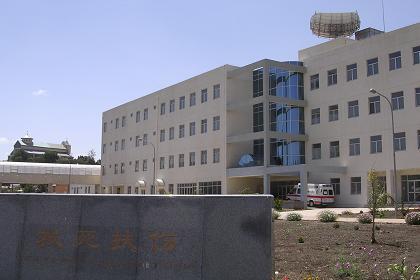
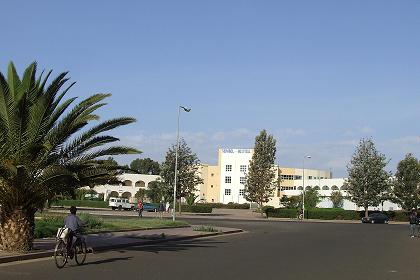
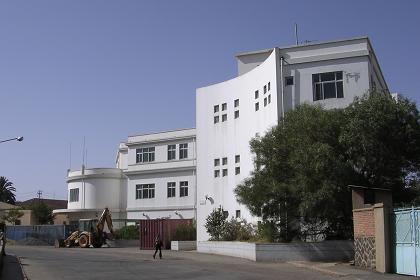
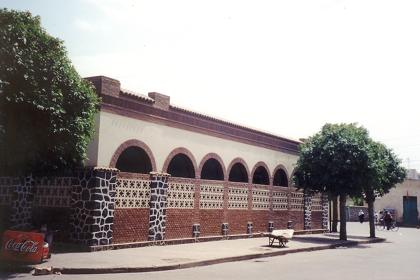
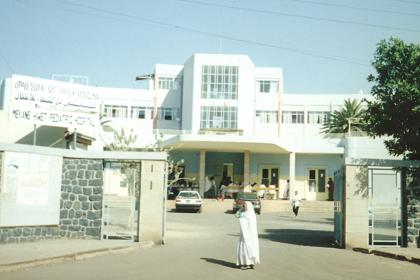
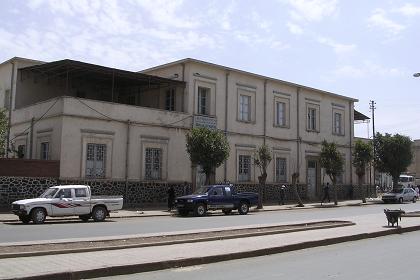
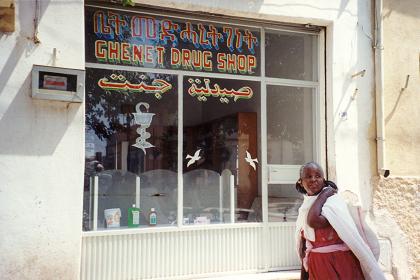
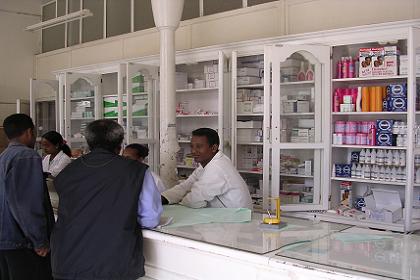

 g Test Centre.
g Test Centre. s with leukemia and lymphoma since 1972. This department has extensively been involved in laboratory research. Using combination chemotherapy supplemented with immune chemotherapy and hematopoietic stem cell transplantation to treat haematological cancerous tumors, many patients have fully recovered.
s with leukemia and lymphoma since 1972. This department has extensively been involved in laboratory research. Using combination chemotherapy supplemented with immune chemotherapy and hematopoietic stem cell transplantation to treat haematological cancerous tumors, many patients have fully recovered.


